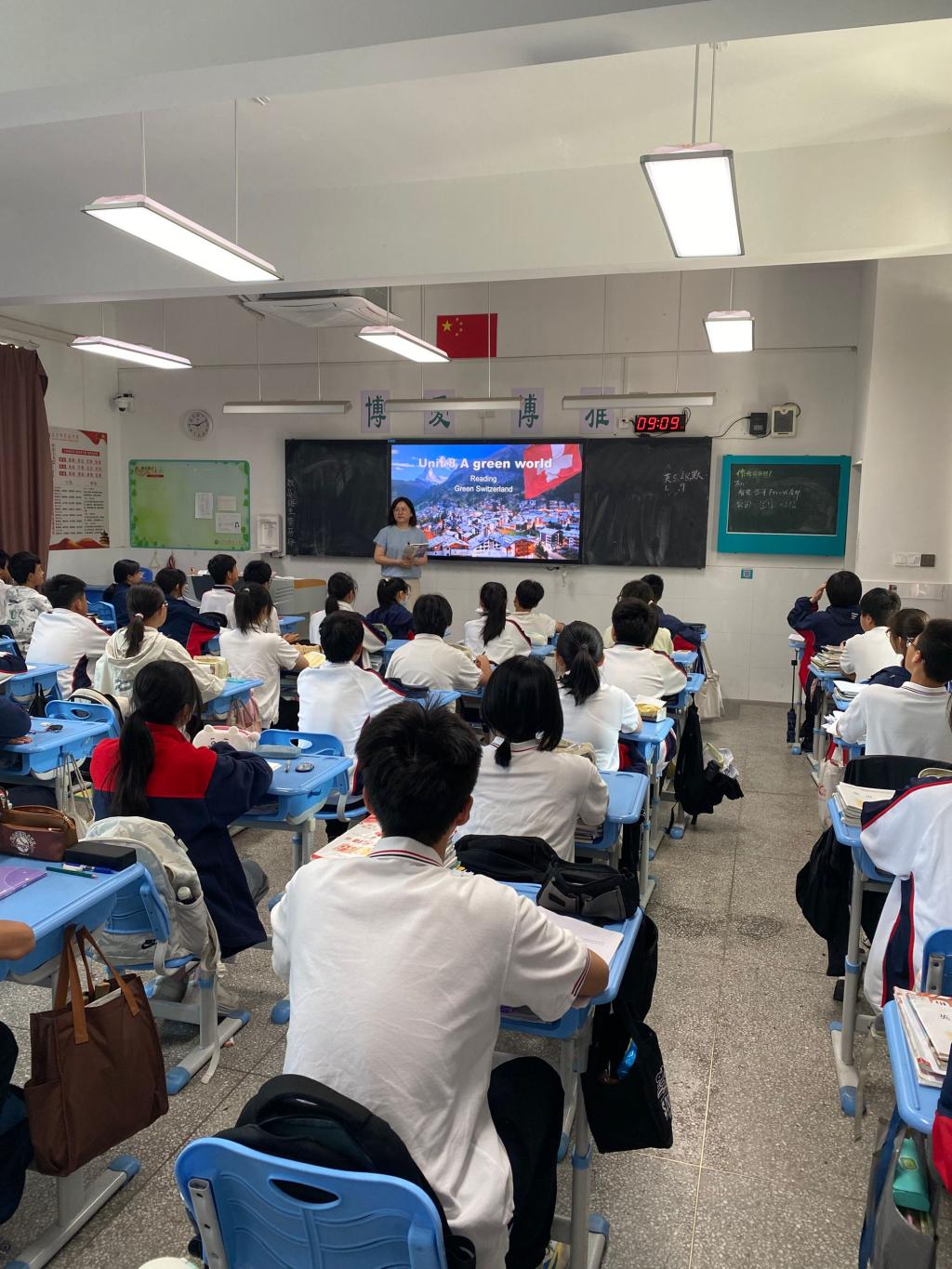Teaching Plan for "Green Switzerland"
I. Teaching Objectives
Knowledge Objectives
Students will master new words and phrases: recycle, separate, allow, fine, run out, depend on, make a difference, etc.
Students will understand the main ideas of the article: Switzerland's environment, recycling practices, laws, and use of new energy.
Ability Objectives
Students can describe Switzerland’s environmental measures using target language.
Students can discuss how to live a green life through group work and role-play.
Moral Objectives
Cultivate awareness of environmental protection and inspire students to take action for a greener world.
II. Teaching 重难点
Key Points: Vocabulary related to environmental protection; main ideas of each paragraph; discussion on green lifestyle.
Difficult Points: Using the passive voice to describe recycling processes (e.g., are separated, are recycled); applying new knowledge to practical discussions.
III. Teaching Methods
Audio-visual teaching (video of Swiss scenery).
Task-based language teaching (reading comprehension, table-filling, group discussion).
Interactive activities (Q&A, role-play, brainstorming).
IV. Teaching Aids
PPT slides with images and vocabulary drills.
A short video about Switzerland’s environmental practices.
Worksheets for reading comprehension and group tasks.
V. Teaching Procedures
1. Warming-up (5 mins)
Show a video of Switzerland’s mountains, lakes, and recycling scenes.
Ask: What do you notice about Switzerland? How does it look “green”?
Lead to the definition of "green" as a good environment (choose B in the PPT question).
2. Pre-reading (7 mins)
Vocabulary presentation: Use pictures and examples to explain recycle, separate, fine, limit, etc.
Map activity: Locate Switzerland on a Europe map; review its capital (Bern), languages, and famous products (watches, Swiss Army knives).
3. While-reading (15 mins)
Skimming: Read the title and first paragraph; answer: Who wrote the article? When is World Environment Day?
Scanning: Read paragraphs 2-4; complete a table about recycling items, laws, and new energy.
Measures |
Details |
Recycling |
Glass, plastic, paper, old clothes/shoes are separated and recycled. |
Laws |
Fines for littering; banning tree-cutting; limiting pollution. |
New Energy |
Solar, wind, water energy – cheap, renewable, low-pollution. |
4. Post-reading (10 mins)
Role-play: Students act as Martina and a reporter to introduce Switzerland’s practices.
Group discussion: How can we make our city green? Fill in a "Dos and Don’ts" table (e.g., use cloth bags, avoid plastic; plant trees, don’t litter).
5. Summary & Homework (3 mins)
Write a short essay: My Plan for a Green Life.
Design a poster about environmental protection for the classroom.
VI. Blackboard Design
plaintext
Green Switzerland
1. Features: mountains, lakes
2. Key Measures:
- Recycling: separate → recycle (clothes → charity shops/factories)
- Laws: fine for littering, limit pollution
- New Energy: sun, wind, water (cost little, never run out)
3. Call to Action: Make a difference!
教学反思(200 字)
本次教案以瑞士环保实践为切入点,通过多模态教学引导学生关注环境保护。成功之处在于:1)结合图片、视频和表格,直观呈现抽象概念(如垃圾分类、新能源),符合初中生认知特点;2)任务设计层层递进,从词汇理解到篇章分析再到生活迁移,培养了批判性思维和语言运用能力;3)情感目标渗透自然,通过对比讨论激发学生对本土环境的关注。
不足之处在于:1)词汇环节耗时较长,可增加小组竞赛等趣味活动提升参与度;2)语法难点(被动语态)未单独梳理,部分学生在输出时可能出现结构错误;3)小组讨论时,教师对学困生的引导不足,需加强分层任务设计。
改进方向:下次课可增加 "语法微专题" 巩固被动语态,设计差异化讨论问题(如为不同英语水平学生提供提示词),并通过 "环保小卫士" 积分制提升全员参与积极性,确保语言学习与情感教育更高效融合
